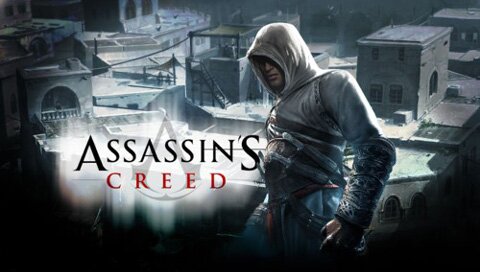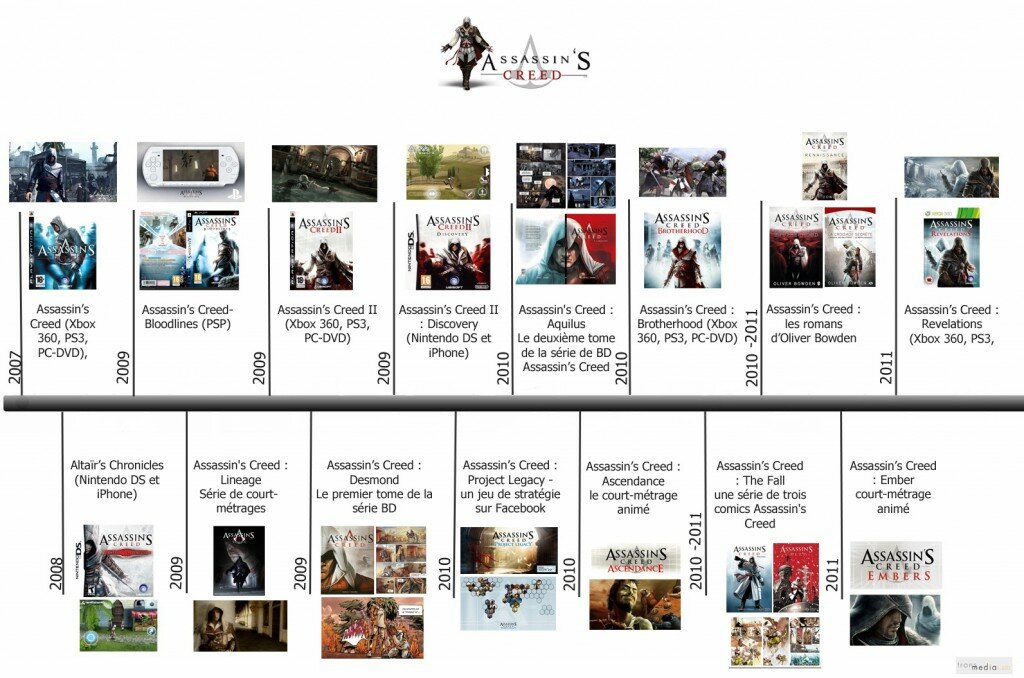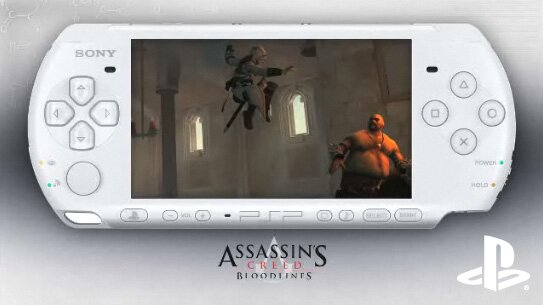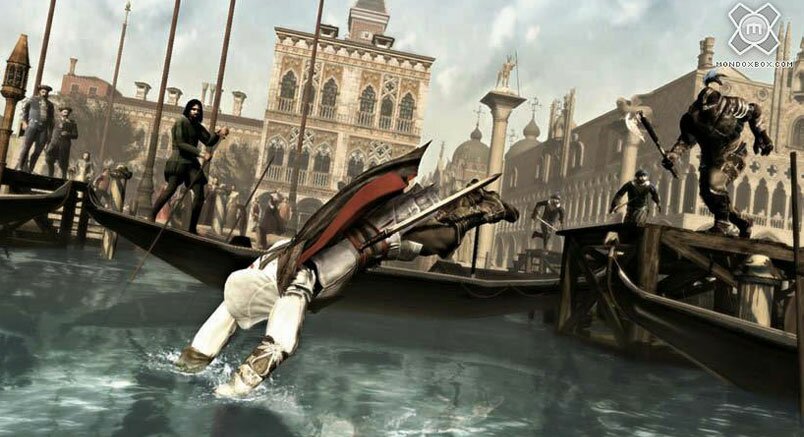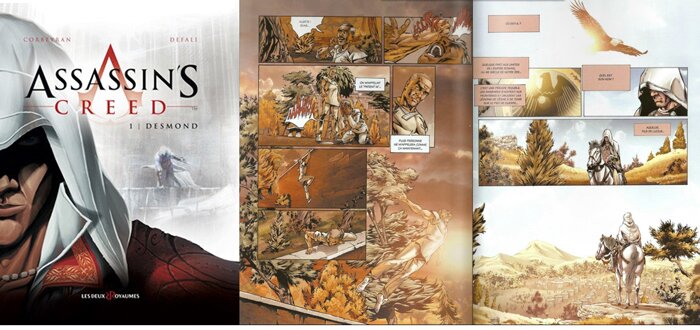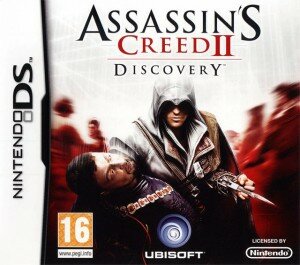Case study: Assassin’s Creed, a transmedia franchise I/2
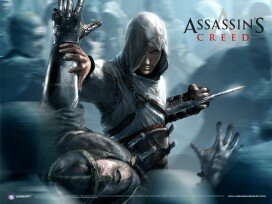
by Ana Vasile, published on 18.11.2011
In the wake of the official launch of Assassin’s Creed Revelations, the latest video game to feature Ezio the Italian assassin, we could not resist the urge to tell you a little bit about a saga that has sold more than 28 million units worldwide. Here’s our look at a phenomenon which has become a genuine transmedia franchise, where each new element contributes to the expansion of a richly imagined world with its roots in European history.
The origins of Assassin’s Creed
Assassin’s Creed, released for PS3 in 2007, was designed at Ubisoft Montreal as an action game, with adventure and infiltration coming together in a narrative inspired by historic fact. The first title in the saga transports us to Jerusalem in 1191 in the role of Altaïr, an elite assassin tasked with bringing hostilities to a halt by attacking both Crusaders and Saracens. There is plenty at stake in the adventure, with the player’s actions deciding whether the Third Crusade will be triggered, settling the fate of the Holy City.
While critics where initially cautious, sales were not: Assassin’s Creed sold over a million copies in its first week, performing far better than expected – a fact emphasised in a press release from the publisher. According to Ubisoft, eight million copies of Assassin’s Creed have been distributed worldwide for different platforms. Patrice Désilets, the game’s creator, believes that between 30 and 35 million people have played the game, once rentals and the second-hand market are factored in.
The world of Assassin’s Creed
Going beyond questions of playability and design, Assassin’s Creed hit the bull’s eye by drawing inspiration from a fascinating period of history and featuring a genuinely charismatic protagonist. But there is more even than that to creating a rich and immersive world, and those who have played the game have become aware that the structure of Assassin’s Creed conceals many mysteries, leaving the way open for numerous new developments…
The real plotline begins in 2012, with a hero called Desmond Miles, an American barman taken prisoner by Abstergo Industries, a pharmaceutical company founded by the Knights Templar.
Desmond is no ordinary patient: hidden in his DNA is precious information about his ancestors, crucial data that Abstergo’s scientists are trying to recover through experiments on genetic memory. Using a machine known as the “Animus”, Desmond relives the actions of his ancestor Altaïr, and in the second title in the series, those of Ezio.
This science-fiction theme, with its contrast to the historical saga of the assassins, is one of the aspects that has most appealed to gamers. Better still, Desmond’s progress, working back through time to relive his ancestors’ adventures, parallels the player’s own immersion in the game’s world. This mirroring of reality is a rare attribute, truly appreciated by gamers. With the essence of the story laid out in this fashion, opportunities to delve ever deeper into the meta-mystery are virtually endless.
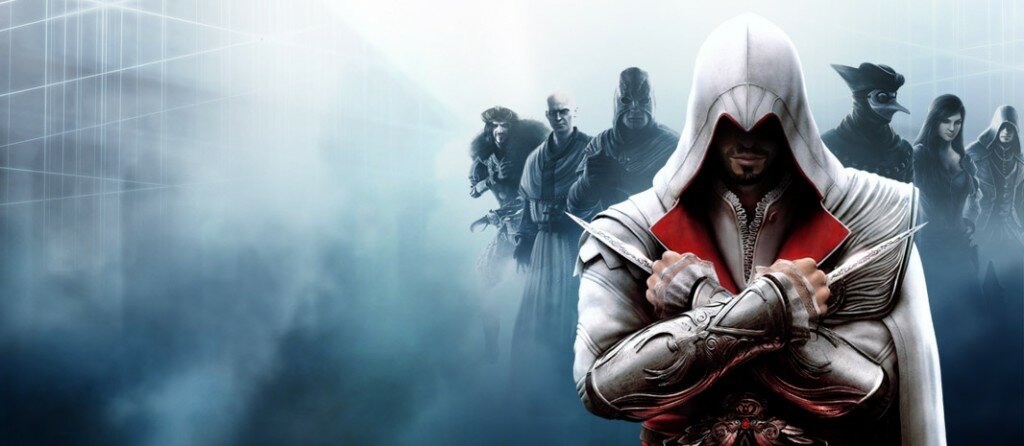
Patrice Désilets, the games’ creator, explained to Ecrans.fr that as soon as development was complete on the first game, he wanted to take Desmond’s adventures further. “It felt like I had opened a whole series of doors, and I was eager to start closing some of them. For me, Assassin’s Creed is much more than a game, it’s a whole universe that we had created, and I was eager to explore it further. I wanted to see where it was all going to take us, on the creative level…”
It is with the launch of the second game we can really start talking about this artificial world in transmedia terms. While two further iterations of the first game were created – Altaïr’s Chronicles and Bloodlines, they were produced “under licence” and did not have a major impact.
Lineage, a series of short films broadcast on the internet and TV channel NRJ 12 in the build up to the release of Assassin’s Creed II, cemented the multi-platform approach: the story had started out on one platform and evolved onto another… From that moment on, Assassin’s Creed adopted a fully multi-platform strategy, launching into the creation of comic-books and short films, expanding the game’s world far beyond the usual promotional vehicles for computer games (official websites for each of the three games released on consoles, a host of , and games for the Facebook platform).
The strategy has been well-rewarded: Assassin’s Creed is now the focus of numerous websites and wikis created by fans, and even fan-fiction…
First tries…
Assassin’s Creed: Altaïr’s Chronicles
Released in 2008 on Nintendo DS then in 2009 for the iPhone (subsequently renamed Assassin’s Creed HD), the game was developed by Gameloft and published by Ubisoft.
 Altaïr’s Chronicles focuses solely on the young Altaïr and events that take place in 1190, in the midst of the Third Crusade. It does not reproduce the story of the first game for portable consoles, choosing instead to explore the protagonist’s youth. However, by ignoring the SF meta-mystery aspect, and not contributing to the central narrative, this version failed to be adopted as a core part the world of the game
Altaïr’s Chronicles focuses solely on the young Altaïr and events that take place in 1190, in the midst of the Third Crusade. It does not reproduce the story of the first game for portable consoles, choosing instead to explore the protagonist’s youth. However, by ignoring the SF meta-mystery aspect, and not contributing to the central narrative, this version failed to be adopted as a core part the world of the game
Released in November 2009 at the same time as Assassin’s Creed II, and developed by Griptonite Games for PlayStation Portable, Assassin’s Creed Bloodlines was the last title to follow the adventures of Altaïr. The story is designed to form a link with the next core game in the assassins’ saga, aiming to uncover a number of mysteries left in suspense by the previous title. Following on from the events of the first Assassin’s Creed game, Bloodlines is also build around Altaïr, who must travel to Cyprus to seek the elimination of the Templars.
First transmedia installments
Assassin’s Creed: Lineage
Created by Ubisoft and broadcast shortly before the launch of Assassin’s Creed II, Lineage is a series of short films that were released on the internet and shown on TV channel NRJ 12.
The films provide insights into Ezio’s family, and so into his motivations. Episode One of the Lineage series was shown for the first time on YouTube on 26th October 2009, and seen by 1.1 million viewers, which at the time was the highest figure ever for a YouTube video in its first 24 hours online. The two subsequent episodes attracted audiences of 250,000 viewers.
The films tell the story of Ezio’s father, Giovanni Auditore, his opposition to the Templars and his attempt to prevent a plot to assassinate the Duke of Milan. The story is continued at the beginning of Assassin’s Creed II. The series used the same locations and sets as the Assassin’s Creed II game, and some of the actors’ voices were also used in the game, to help weave the two scenarios into a single tapestry.
Assassin’s Creed II
The second game came out in November 2009 on Xbox 360 and PS3, to an enthusiastic response from the press and gamers. This time the story takes place in Renaissance Italy, with a new protagonist: Ezio Auditore da Firenze. Assassin’s Creed II performed even better than its predecessor, with 1.6 million copies sold worldwide in the first week and total worldwide sales eventually coming close to 9 million.
Assassin’s Creed: the first volume of the comic book
In November 2009 Ubisoft published the first volume of an Assassin’s Creed comic book, in France and Belgium only. Entitled “Desmond”, the comic explores the reasons behind Desmond Miles’ imprisonment in a secret and ultra-secure experimental laboratory.
Published by “Les Deux Royaumes”, the publishing house created by Ubisoft, this comic book series is not just a promotional tool for the games developer. Corbeyran and Defali, well-known figures in the comic book world and the names behind the Stryges series, were put in charge of the project, with the aim of providing further insights into still half-hidden areas of the game’s world.
In volume one, fans learned more about Desmond Miles and his ancestors Altaïr and Ezio, as well as about the famous Patient 16, whose symbols had aroused the curiosity of a large portion of the gaming community.
This is the sort of touch that explains the success of this transmedia franchise: small details scattered through the story’s world which can be developed into the plotline of another complementary narrative. Jeff Gomez characterised them as “distant mountains”, features that appear to be far-off, in the background, but which drive an urge to explore further, and underline the richness of the artificial world.
Assassin’s Creed II : Discovery
Released on Nintendo DS and iPhone at the same time as the main Assassin’s Creed II game, Discovery was developed by Griptonite Games. It’s an action game played as Ezio Auditore, who must travel to Spain to save his brother assassins and defeat a Templar plot. While the DS version of Assassin’s Creed, featuring Altaïr, the protagonist of the first game, was a prequel which revealed the origins of the character, Discovery is simply a parallel story.
With the launch of Assassin’s Creed III: Revelations, the transmedia world created by Ubisoft will see a new injection of energy. Discover the latest enhancements to this game’s world and its developments here.



